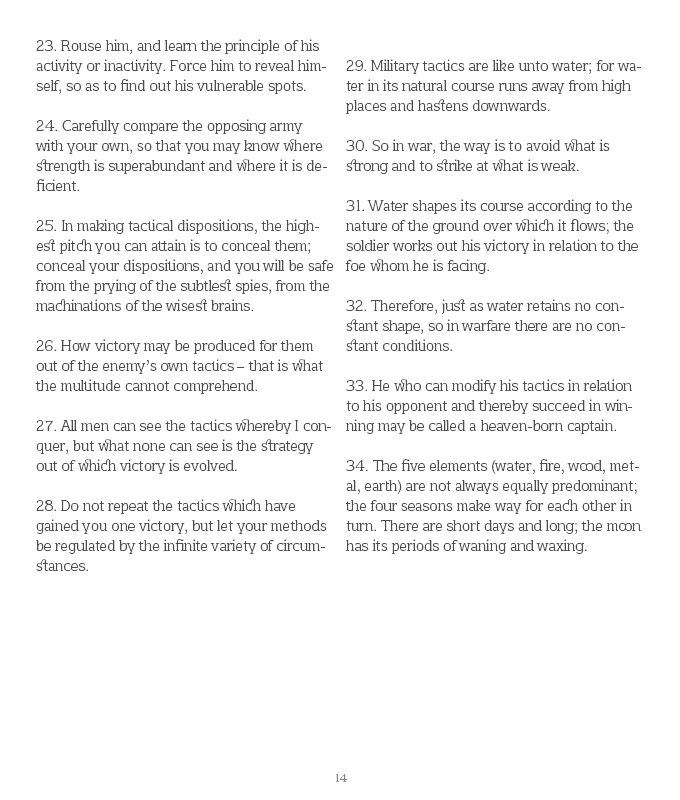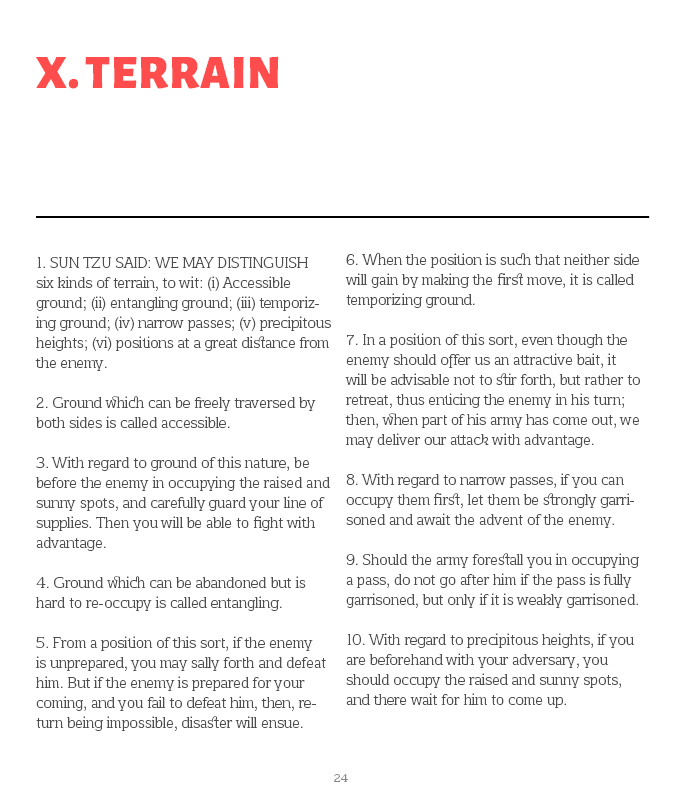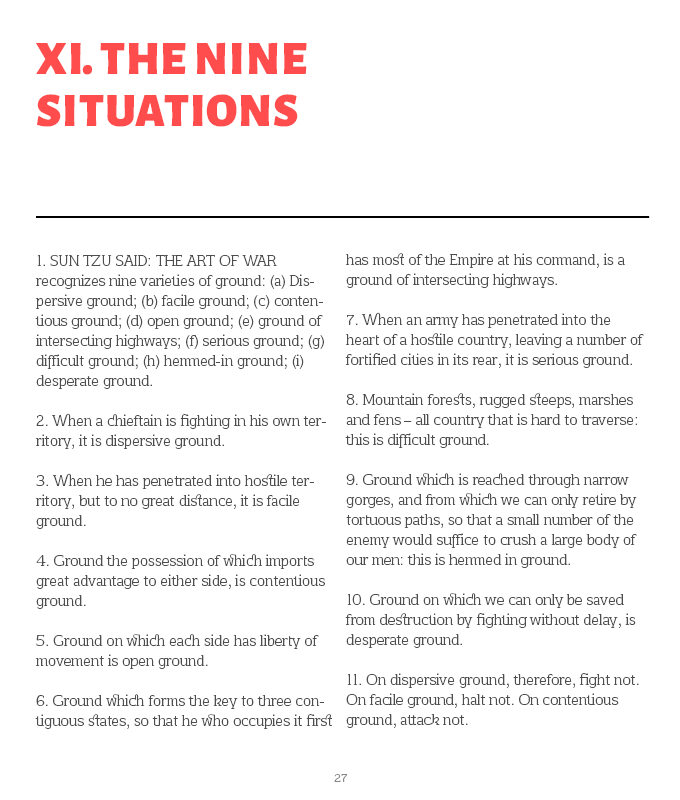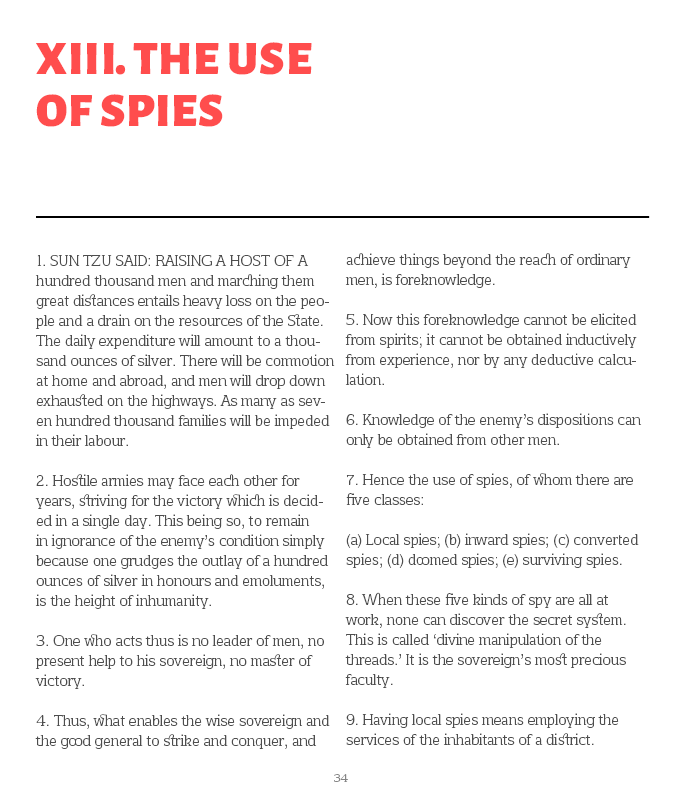Introduction
First, an introduction to this graphic series: If you want to buy a copy of Sun Tzu’s The Art of War, you have to spend, for the Harper Press’ edition, ₹207 (hardcover) and ₹125 (paperback) and for the Cosimo Classics’, US$10.99 (hardcover) and US $3.95 (paperback). But why buy, when this work of art is already available in the public domain?
In fact, it is available right here! Thanks to the Internet Classics Archive and the Literature Network, I have been able to get the copyright-free text. I have nothing to say about those people who are addicted to the smell of a new book but still if you want a PDF version instead of these separated PNGs, drop an email.
The Art of War
When a chunk of the world was busy looking for the best pulp to use as a paper and in deciding whose men to kill and whose women to drill—believed to be in the 5th century BC around the Chinese Warring States Period—Sun Tzu or Master Sun was occupied in composing one of the greatest literary–military works, The Art of War, sometimes also known as Master Sun’s Military Strategy.
Many uncountable years later, for the first time it was translated into English, in 1910, by an English museum curator by the name of Lionel Giles, whose work is presented here. Records show some of Giles’ compatriots had tried to translate but with no success.
The Art of War, as the name suggests, is about warfare, but it is not all about war. It is a philosophy in itself. The crisp lessons apply to every field of life in our contemporary world right from the personal to the political.
To summarise very badly, it is all about knowing: knowing who you are, knowing your competitors and knowing when to strike for the best result. The best thing about this book or a treatise, to be precise, is its crispiness. On one side, there is a war going on between whose translations best capture the style and substance of the original Chinese treatise; and on the other, many of us are fumbling to get the most out of The Art of War for a better life.
Sun Tzu
The Art of War
Translated by Lionel Giles, 1910
Contents
I. Laying Plans
II. Waging War
IV. Tactical Dispositions
V. Energy
VI. Weak Points and Strong
VII. Maneuvering
VIII. Variation in Tactics
IX. The Army on the March
X. Terrain
XI. The Nine Situations
XII. The Attack by Fire
XIII. The Use of Spies
Here’s the collection:















































Comments
Post a Comment